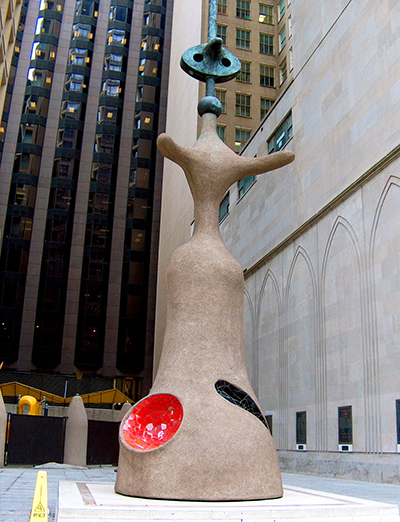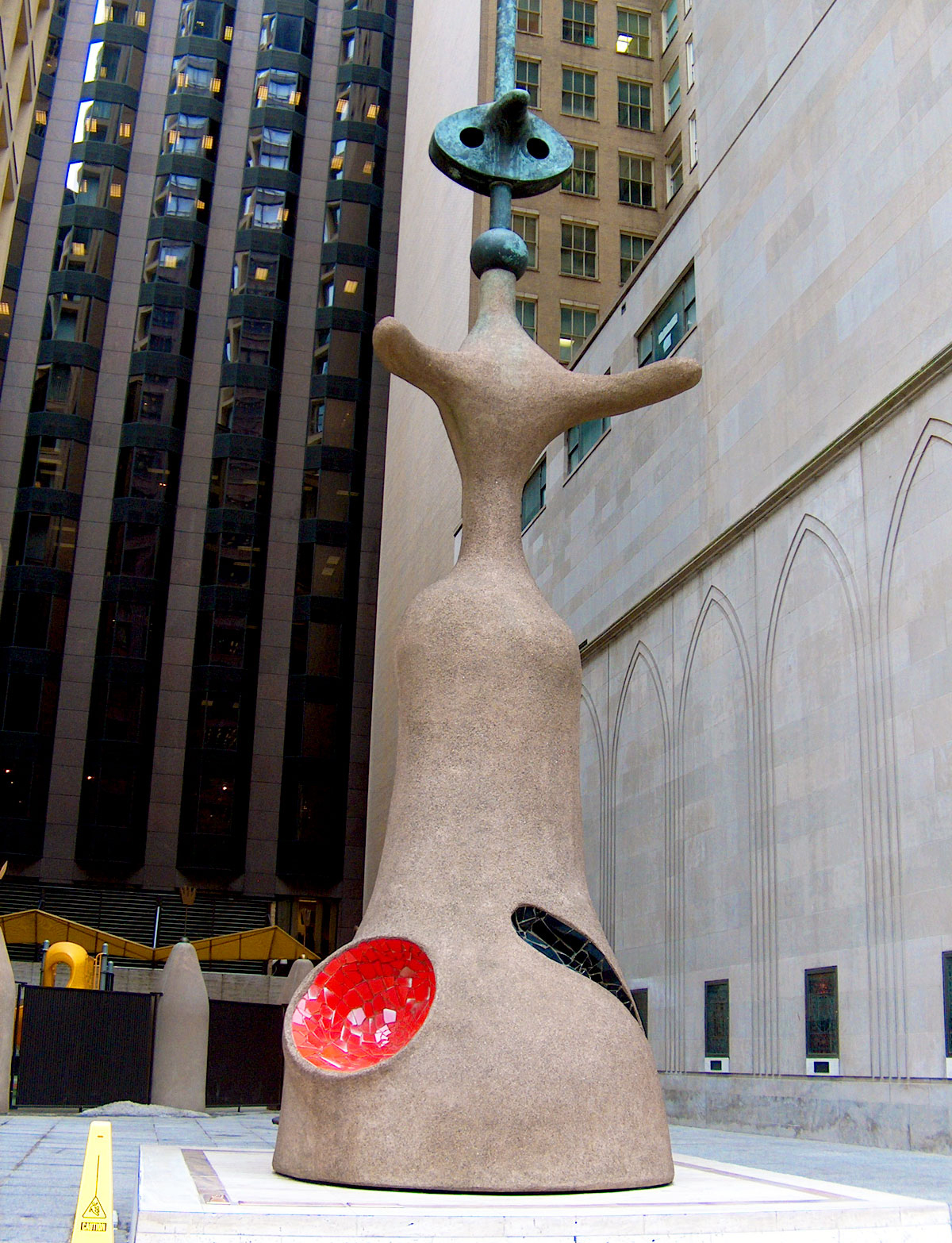Miró's Chicago is the most famous sculpture by Spanish artist Joan Miro and remains amongst the most famous artworks from his long and distinguished career.
This mixed media sculpture stands at 12 metres tall and can be found at the Brunswick Plaza in the American city of Chicago. Miro initially titled this artwork as The Sun, the Moon and One Star as these are the fundamental component pieces of the sculpture. The piece is a true mixed media sculpture, being made of steel, wire mesh, concrete, bronze, and ceramic tile. Miro was only able to produce such bold sculptures once his career had taken off, because of the financial and logistical challenges involved.
This sculpture was commissioned by Mayor of Chicago, with various local institutions donating money in order to allow the construction to go ahead. Artist Miro was also keen to repay their faith and so did his best to reduce costs where possible. Whilst payment was agreed in 1979, it was a further two years before Miro's Chicago was finally unveiled. It remains just across the street from the Daley Center, and is a popular element in the artistic appeal of this large city. Around the corner from this famous sculpture, is also the city's Picasso museum, offering further famous abstract art.
Upon its unveiling, some local Chicago residents were distinctly unimpressed with the sculpture, though this would not be surprising to any modern artists who were subjecting their work to scrutiny from the entire public, as opposed to those who had previous knowledge of their work and the Surrealist movement in general. Over time, the artwork has certainly grown in popularity, and many now refer to it as "Miss Chicago". This would be due to the curved body of the sculpture and also the way in which it resembles a human figure, albeit using elements of the cosmos. Many wandering past will have a quick glimpse without an interest in the story behind the piece, but at least it allows Miro's name to reach a wider audience, with some then willing to look further into his career and examine some of his other career highlights.
Artist Miro produced a plaster model in 1963 which was to be his initial design for the larger piece to be installed in the streets of Chicago. This would be the normal practice for handling a large project, both in terms of its physical size but also the significance of those commissioning the work. Perhaps it was also used for sign off, to allow others to better understand how the final sculpture would look. The model is generally termed as a maquette, which is simply the technical term for study pieces created by sculptors, whatever the style or materials used. The model is believed to have been gifted to the Art Institute in Chicago by Gift of William E. Hartmann, and that would certainly feel like the right place for it, as if a child and parent have been re-united. There was also a bronze model completed in 1967 which now resides at the Milwaukee Art Museum.
The initial agreement between the Brunswick Corporation and the artist was made in 1969 but it was later cancelled due to the lack of available funds. Ten years later the project was resurrected by the Chicago Mayor and eventually the funds were found in order to allow the project to go ahead. One issue with public sculpture can be the bureaucracy that is involved, which will often put artists off. Everything from planning permission, to seeking the approval of funding from a variety of different organisations, to also gaining public approval for the actual design can lead to many to turn away from these types of commissions. The positive impact of promoting one's name to a much wider audience can sometimes be enough to lure in great names, though, and it worked for Miro in this case. Eventually, the completed artwork was unveiled on the 21st of April, 1981, which is also the artist's birthday.
After the initial plans were cancelled, it was the plaster model donated to a Chicago art gallery which served as the inspiration to resurrect the plans a decade later. The funds for this project were raised through private and public means, with around $500,000 raised in total, after which the artist would soon commence work. Any object this large would always require considerable assistance, and so Miro would design the work before directing others that were involved with its construction and installation. Miro is known to have produced the memorable parts himself, mainly within his Spain. The bright ceramic elements found at the bottom of the sculpture where handmade by Miro in Majorca whilst he created the bronze elements in Barcelona. He also called on the help of Joan Artigas to advise on the ceramic work as well as providing an additional level of oversight during the construction in the US. Both men would have been involved with a number of projects at this time, meaning help was necessary to mould the artistic direction during the construction phases.





